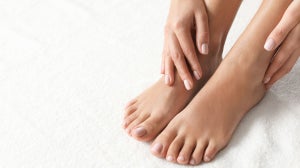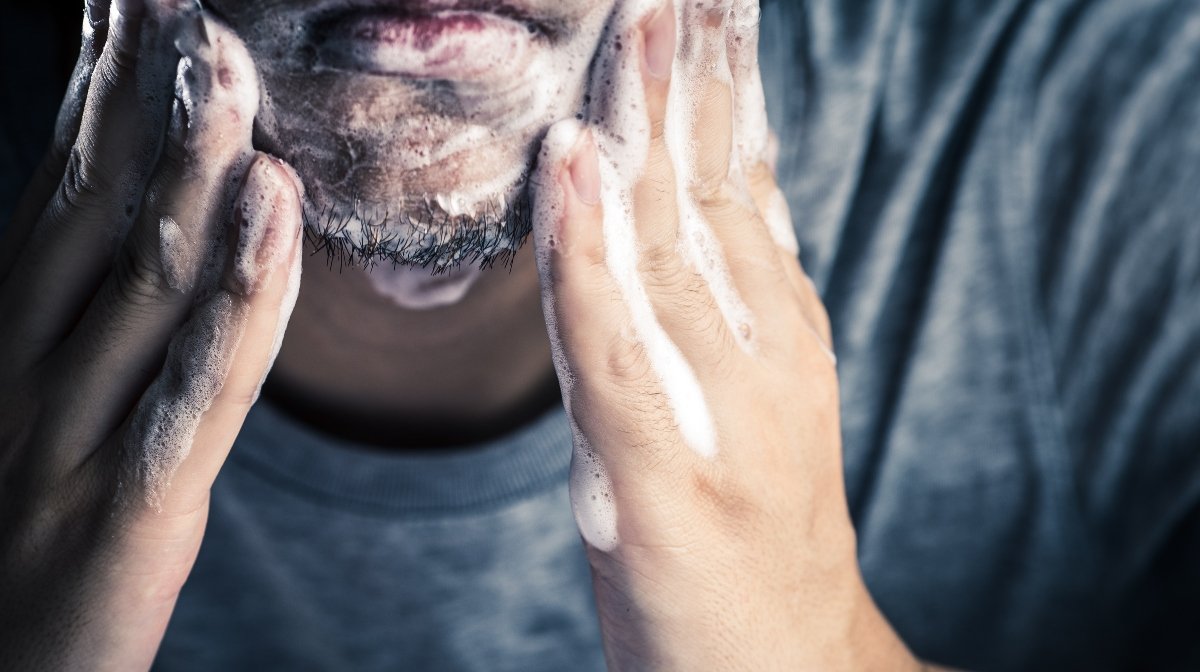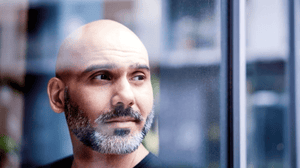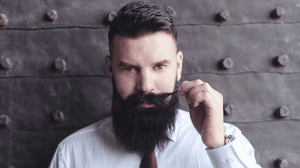
If you struggle with a patchy beard or are looking for ways to grow a thicker beard, you might be curious to know the science behind facial hair growth.
While your success in the beard growth department is often determined by genetics, there are several factors and lifestyle choices that could be diminishing your chances of growing full, voluminous facial hair.
At Gillette, we’ve got you covered with our top tips for dealing with sparse or slow beard growth, offering an effective grooming routine to help encourage facial hair growth.
Why Do Men Have Facial Hair?
Let’s begin with a scientific recap.
The reason men grow facial hair and women don’t is all down to hormones. Testosterone is responsible for facial hair growth, producing the hormone called dihydrotestosterone (DHT) that stimulates hair follicles on the chin.
Men have more testosterone, hence why they grow beards and most women don’t.
Facial Hair Growth Cycle
There are four stages in the general hair growth cycle, which also apply to facial hair:
1. Anagen – The Growth Stage
During this phase, the facial hair forms and grows.
The duration of this stage is dependent on your hair type. it can last between 2 and 7 years. The root develops from the follicle and a hair sprouts, growing until it reaches maximum length.
2. Catagen – The Regressive Stage
Once the anagen phase is complete, your facial hair enters catagen.
During this stage, the hair disconnects from its blood and nutrient supply and gradually stops growing. This regressive phase can last up to several weeks and means that the follicle will be ready to grow again once stimulated.
3. Telogen – The Resting Stage
After months (sometimes years) in action, the facial hair follicles go into a state of rest that can last for up to several months.
4. Exogen – The Shedding Stage
During the anagen, catagen and telogen phases, facial hairs are anchored to the follicles. During the exogen stage, signals are given to the follicles to release the hair, causing it to shed. You may notice this significantly when brushing your beard.
How Long Does It Take Facial Hair to Grow?
With these phases in mind, how fast does facial hair grow?
If you’re going for the full beard look, it can take two to four months to grow, but this is depends on the individual.
Facial hair tends to grow between 0.3 and 0.5 mm every 24 hours, which works out at between one third and one half an inch per month.
After about 2 weeks post-shave, you should be able to see if you’re dealing with any patchiness.
How to Encourage Facial Hair Growth
While the rate in which your facial hair grows is largely determined by your genetics, age and ethnicity, there are several tips and tricks you can try to help encourage facial hair growth.
1. Eat a Balanced Diet
Ensuring that you’re eating healthily will help your body get the correct nutrients it needs for supporting all of its daily functions, including facial hair growth.
2. Get Plenty of Rest
Good quality sleep lends itself to better overall health. Too much stress and too little sleep can lead to a whole host of health and wellbeing problems and is thought to negatively impact facial hair growth.
It’s recommended that you get around 7-8 hours of sleep each night.
3. Exercise
Keeping active is a great way to encourage blood flow, which in turn can help to stimulate hair follicles.
You should be completing at least 30 minutes of physical activity per day to maintain a healthy lifestyle.
4. Wash Your Face Daily
Whether you have a full beard or 5 o’clock shadow, one of the most important steps to maintaining healthy looking facial hair is by looking after your skin.
Hydrated skin is important for encouraging hair growth, both head and facial hair.
Washing your face daily helps to:
Unclog pores
Reduce the likelihood of ingrown hairs
Remove dead skin cells and debris from around the hair follicles
Using a hydrating face wash also helps to deliver all-important moisture to the skin, creating an optimal environment for facial hair growth.
The King C. Gillette Beard and Face Wash contains mild cleansers to tick all of those boxes, optimised to work specifically for facial hair and the skin underneath.
Formulated with conditioning ingredients including argan oil and coconut oil, not only is facial hair left feeling nourished and soft, but your skin is gently cleansed to remove impurities.
5. Moisturise Your Skin
Skin irritation is not only uncomfortable, but can lead to itching and scratching which could damage your facial hair follicles.
Applying moisturiser to your skin each day is a great way to combat beard dry skin, giving your facial hair the best fighting chance of growth.
The Gillette Skin Ultra Sensitive Moisturiser is designed to help hydrate and nourish your skin every day. When applied daily, humectants, like glycerine, help to bind water in the upper layers of the skin, while shea butter and Vitamin E help to replenish skin moisture and to restore the skin's natural barrier.
6. Apply Beard Oil
If you have length to your facial hair, rounding off your grooming routine with an application of beard oil is a great way to nourish strands and further moisturise the skin underneath.
The King C. Gillette Beard Oil is designed to soften coarse facial hair with its unique plant-based blend featuring argan oil, avocado oil, jojoba oil, grapeseed oil, sweet almond oil and evening primrose oil.
This beard care product also keeps the skin beneath your facial hair nourished and comforted, as it can otherwise be prone to flaking and itchiness, creating a moisturised environment for encouraging facial hair growth.

Related Articles









